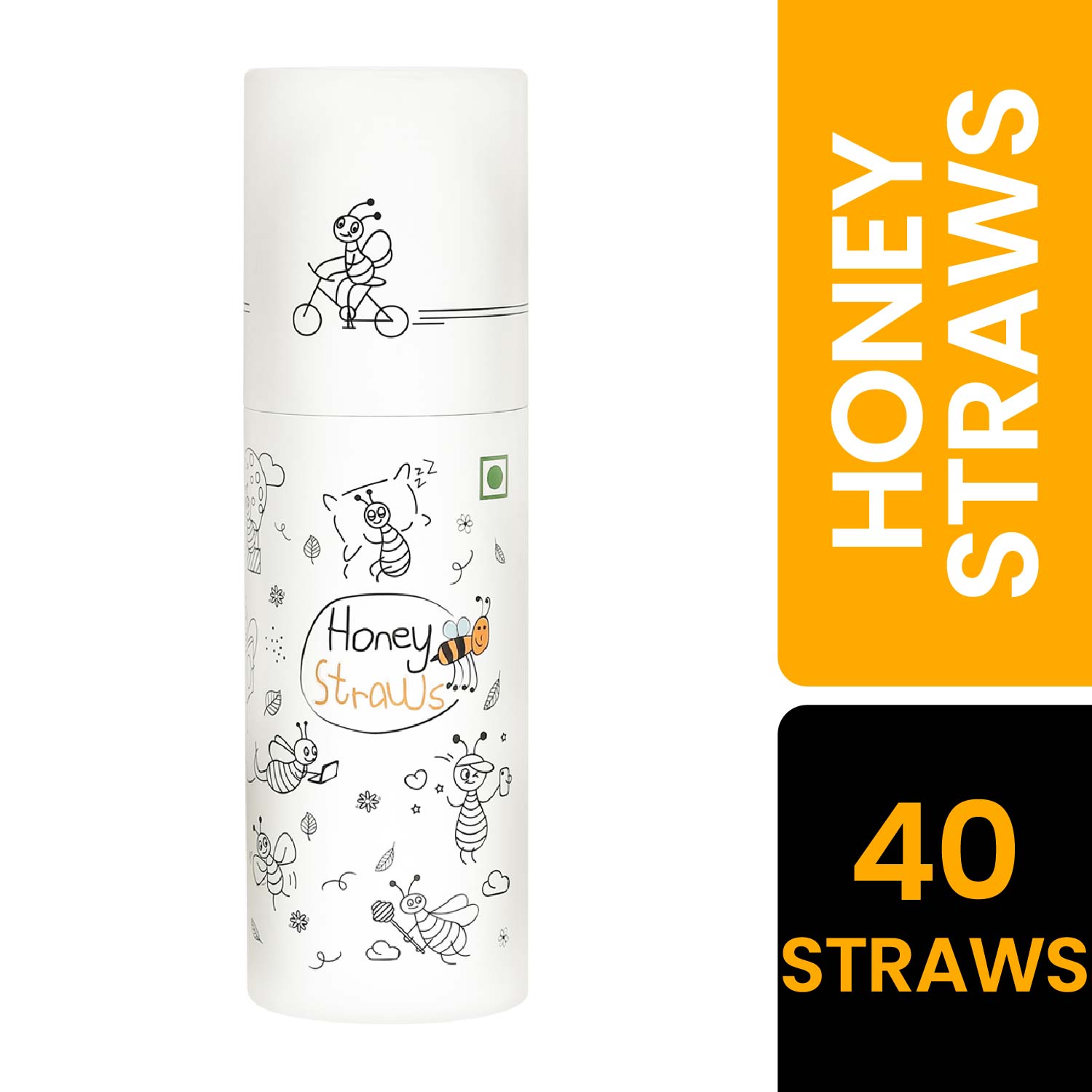Which foods are good for your brain? Learn how phenolics, antioxidants & bioactive compounds help your brain. Know how honey may contribute to your brain health.
Neuroprotective foods are those that contain compounds and nutrients believed to support and promote brain health, potentially protecting the nervous system and reducing the risk of neurodegenerative diseases. These foods often contain antioxidants, anti-inflammatory agents, vitamins, and minerals that contribute to overall cognitive well-being.
While more research is needed to understand the impact of specific foods on the brain, some examples of foods considered neuroprotective include:
The anti-inflammatory properties of honey may contribute to overall brain health, as chronic inflammation is associated with neurodegenerative diseases.
Some studies suggest that honey may enhance the production of brain-derived neurotrophic factor (BDNF), a protein associated with cognitive function and mental health.
Neurodegenerative Diseases:
Neurodegenerative diseases are a group of disorders characterized by the progressive degeneration of the structure and function of the nervous system, particularly the neurons (nerve cells). These diseases result in the gradual decline of cognitive and motor functions over time. Common neurodegenerative diseases include Alzheimer's disease, Parkinson's disease, Huntington's disease, and amyotrophic lateral sclerosis (ALS).
Impact on Cognitive and Motor Functions:
Cognitive Functions:
- Memory Loss: Progressive memory loss is a hallmark of diseases like Alzheimer's.
- Cognitive Decline: Patients may experience a decline in thinking, reasoning, and problem-solving abilities.
- Language Impairment: Difficulty in communication and language skills may occur.
Motor Functions:
- Tremors: In conditions like Parkinson's disease, patients may experience tremors and difficulties in motor coordination.
- Muscle Weakness: Diseases like ALS (Lou Gehrig's disease) lead to muscle weakness and, eventually, paralysis.
- Impaired Coordination: Motor coordination and balance can be significantly affected.
Current Challenges in Treating Neurodegenerative Conditions:
- Lack of Cure: Most neurodegenerative diseases lack a cure, and treatment is often focused on managing symptoms and slowing down progression.
- Complexity of the Brain: The complex nature of the brain poses challenges in understanding the underlying causes and mechanisms of these diseases.
- Early Detection: Diagnosing neurodegenerative diseases in the early stages is challenging, and by the time symptoms manifest, significant damage may have occurred.
- Individual Variability: Patients with neurodegenerative diseases can show a wide range of symptoms, making it challenging to develop universal treatment strategies.
- Limited Neuroregeneration: The limited capacity of the nervous system to regenerate damaged neurons adds to the complexity of treatment.
Researchers and healthcare professionals continue to explore new therapeutic approaches, including drug development, gene therapies, and lifestyle interventions, to address the challenges associated with neurodegenerative diseases. Early diagnosis, understanding of genetic factors, and advancements in medical technology are essential for improving treatment outcomes and enhancing the quality of life for individuals affected by these conditions.
The Role of Bioactive Compounds in Neuroprotection:
Introduction to Bioactive Compounds:
Bioactive compounds are naturally occurring molecules found in various foods, plants, and organisms that have a significant impact on human health. These compounds play a crucial role in preventing and managing diseases due to their diverse physiological effects. Examples of bioactive compounds include polyphenols, flavonoids, alkaloids, and terpenes.
Significance of Bioactive Compounds:
Antioxidant Properties: Many bioactive compounds exhibit powerful antioxidant properties, helping to neutralize harmful free radicals in the body.
Anti-Inflammatory Effects: Some bioactive compounds have anti-inflammatory effects, reducing inflammation linked to various diseases.
Cellular Protection: Bioactive compounds can protect cells from damage and support overall cellular health.
Immune System Modulation: Certain compounds can modulate the immune system, enhancing its ability to respond to threats.
How Bioactive Compounds Offer Neuroprotection:
Antioxidative Stress: Neurodegenerative diseases often involve oxidative stress, leading to neuronal damage. Bioactive compounds counteract this stress by scavenging free radicals and reducing oxidative damage in the brain.
Anti-Inflammatory Action: Chronic inflammation is associated with neurodegeneration. Bioactive compounds with anti-inflammatory properties help mitigate inflammation, potentially slowing down disease progression.
Neurogenesis Promotion: Some compounds stimulate neurogenesis, the formation of new neurons, which is crucial for brain health and repair.
Enhanced Cerebral Blood Flow: Certain bioactive compounds contribute to improved blood flow to the brain, ensuring an adequate supply of nutrients and oxygen.
The Potential of Phenolic Compounds:
Neuroprotective Effects: Phenolics, or phenolic compounds, are a diverse group of organic compounds that contain a phenol ring (a six-membered carbon ring with an attached hydroxyl group, -OH). These compounds are widely distributed in the plant kingdom and have various roles in plants, including defence against pathogens and UV radiation. Phenolic compounds are known for their antioxidant properties, which means they can help neutralize free radicals in the body, potentially reducing oxidative stress and damage to cells. They are also responsible for the color, flavor, and aroma of many fruits, vegetables, and beverages.
There are different classes of phenolic compounds, including flavonoids, lignans, and phenolic acids. Each class has its specific chemical structure and biological activities. These compounds have shown neuroprotective effects in preclinical studies.
Memory Enhancement: Phenolics like resveratrol (found in red grapes) have been associated with memory enhancement and cognitive function improvement.
Reduced Neuroinflammation: Phenolic compounds can reduce neuroinflammation, contributing to the overall protection of neural tissues.
Phenolic Compounds in Honey:
Honey, a natural sweetener, contains a variety of bioactive compounds, with phenolic compounds being one of the key components.
Phenolic compounds in honey, such as flavonoids and polyphenols, exhibit antioxidant and anti-inflammatory properties.
Antioxidant and Anti-Inflammatory Effects:
Phenolic compounds in honey contribute to its antioxidant capacity, helping to combat oxidative stress in the brain.
The anti-inflammatory effects of honey's phenolic compounds may play a role in protecting neurons from inflammation-related damage.
Neuroprotection in Preclinical Studies:
Preclinical studies suggest that honey's phenolic compounds may offer neuroprotection by influencing various cellular processes.
These compounds have shown promise in experimental models of neurodegenerative diseases.
Phenolic Richness in Plant By-Products
Phenolic compounds are distributed in edible parts of plants, and the richness of these compounds in by-products compared to the pulp makes them valuable resources.
1. Fruits and Vegetables:
The total phenolic content varies among different fruits and vegetables. The variations can be attributed to factors such as species, cultivars, agronomic practices, and environmental conditions.
Phenolic compounds in fruits are found in both free and bound forms. Analyzing only free forms may underestimate the total phenolic content.
Organic farming practices can influence phenolic content, with some studies suggesting higher phenolic levels in organically grown crops.
Example:
2. Beverages:
Fruit juices, and tea, are significant sources of phenolics in the human diet.
Commercial processing procedures may lead to reductions or losses of phenolic compounds in juices.
Example:
3. Phenolic Compounds in Agro-Industrial By-Products:
By-products from the processing of plant foods, such as peels, seeds, and pomace, are rich sources of phenolic compounds.
Olive mill wastes, citrus peels, grape seeds, and skin are examples of agro-industrial by-products containing valuable phenolics.
Bioprocesses and thermal treatments can enhance the recovery of phenolic compounds from these by-products.
Example:
Phenolic compounds from various sources have been studied for their antioxidant activities in different food systems.
Rosemary extracts, green tea extract, mango seed kernel powder, and grape pomace phenolics are examples of natural antioxidants tested in oils and other food matrices.
Example:
Phenolic Compounds in Honey
Honey, a natural sweetener produced by bees, also contains a variety of phenolic compounds. The composition of these compounds can vary based on the floral and geographical origin of the honey. Common phenolic compounds found in honey include flavonoids, phenolic acids, and tannins.
Floral Origin Impact
Different types of honey, such as acacia, buckwheat, and manuka honey, exhibit distinct phenolic profiles. Manuka honey, for instance, is known for its high methylglyoxal content, contributing to its unique antibacterial properties.
The impact of floral origin on the phenolic composition of honey extends beyond well-known varieties like acacia, buckwheat, and manuka. Neem honey and Kashmir white acacia honey, sourced from unique botanical environments, contribute to the rich tapestry of honey varieties.
Kashmir White Acacia Honey
The nectar collected from locust blossoms contributes to the distinctiveness of Kashmir white acacia honey. This honey variety has a light color and delicate flavor profile. Studies have shown that acacia honey, in general, tends to have a higher phenolic content compared to some other honey types. The specific floral source, in this case, the locust trees in Kashmir, further enriches the honey with a nuanced composition of phenolic compounds. Get your Kashmir White Acacia honey now!
Antioxidant Properties
The phenolic compounds in honey contribute to its antioxidant capacity, providing potential health benefits. Honey has been studied for its role in combating oxidative stress and inflammation.
Potential Health Benefits
Research suggests that the phenolic compounds in honey may have various health benefits, including anti-inflammatory, antimicrobial, and anticancer properties.
Phenolic Compounds as Food Antioxidants
Natural vs. Synthetic Antioxidants
The use of synthetic antioxidants in foods has raised safety concerns, leading to increased interest in natural alternatives. Phenolic compounds from plant sources, including by-products and honey, are being explored as natural antioxidants.
Applications in Food Industry
Phenolic compounds extracted from various sources have demonstrated antioxidant efficacy in different food systems, such as oils, meats, and emulsions. Their application in extending the shelf life of food products is an area of active research.
Incorporating Neuroprotective Foods Into Your Diet
Practical Tips for Daily Meals
- Breakfast Boost
- Snack Smart
- Culinary Creativity
- Omega-3 Rich Meals
Recipe Ideas for Brain-Boosting Meals and Snacks
Honey-Glazed Salmon
Ingredients:
Salmon fillets
Olive oil
Lemon juice
Honey
Garlic (minced)
Salt and pepper
Instructions:
Preheat the oven and place the salmon fillets on a baking sheet.
In a bowl, mix olive oil, lemon juice, minced garlic, honey, salt, and pepper.
Brush the honey mixture over the salmon.
Bake until the salmon is cooked through and the glaze is caramelized.
Berry Walnut Parfait
Ingredients:
Mixed berries
Greek yoghurt
Walnuts
Honey
Instructions:
Layer Greek yoghurt with mixed berries and crushed walnuts.
Drizzle honey over each layer.
Repeat for a visually appealing and delicious parfait.
The Need for Further Research
While current research highlights the neuroprotective potential of phenolic compounds, there is still much to uncover. Gaps in understanding how specific compounds impact brain health and the optimal dosages warrant further investigation.
In conclusion, prioritizing neuroprotective foods is integral to promoting brain health. Honey, with its diverse phenolic compounds, adds a sweet and scientifically supported dimension to this dietary approach.
Remember that small changes in your diet can lead to significant benefits for your brain. Embrace the notion that what you eat matters, and let the natural sweetness of honey be a constant companion on your path to optimal brain health.
In your pursuit of a brain-boosting diet, consider making honey a daily companion. Use truly raw honey by HoneyAllDay which is cold processed & NMR tested, so you know that it is unadulterated, unpasteurized, only truly raw honey just like how it needs to be. You can also have honey on the go with our portable honey straws and honey pouches!
What are neuroprotective foods?
Neuroprotective foods support brain health by reducing inflammation, preventing oxidative stress, and enhancing cognitive function.
How does honey help in brain health?
Honey contains antioxidants and natural sugars that support brain function, improve memory, and help reduce neuroinflammation.
Which foods are best for brain health?
Foods like honey, nuts, berries, fatty fish, dark chocolate, and leafy greens help protect brain cells and enhance cognitive function.
Can neuroprotective foods prevent brain diseases?
While they can't fully prevent diseases, these foods may reduce the risk of neurodegenerative conditions like Alzheimer’s and Parkinson’s.
How often should I eat neuroprotective foods?
Including brain-boosting foods in your daily diet can support long-term cognitive health and overall well-being.
Prioritize your well-being through the delicious addition of our truly raw honey to your meals.





